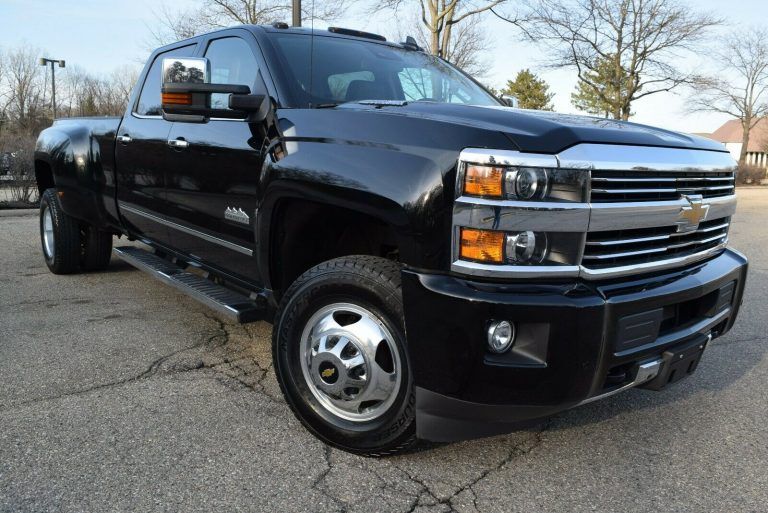New Single Cab Trucks For Sale: Your Comprehensive Guide to the Ultimate Workhorse
New Single Cab Trucks For Sale: Your Comprehensive Guide to the Ultimate Workhorse cars.truckstrend.com
In an automotive landscape increasingly dominated by sprawling crew cabs and luxurious SUVs, the humble single cab truck often gets overlooked. Yet, for a significant segment of buyers – those who prioritize utility, affordability, and rugged simplicity above all else – the new single cab truck remains an indispensable tool. Far from being an outdated relic, these no-nonsense pickups represent a smart, cost-effective, and highly capable choice for a diverse range of applications, from job sites and farms to personal projects and weekend adventures.
This comprehensive guide will delve into everything you need to know about new single cab trucks for sale, exploring their unique advantages, what to look for, popular models, and practical advice for making an informed purchase.
New Single Cab Trucks For Sale: Your Comprehensive Guide to the Ultimate Workhorse
The Enduring Appeal of the Single Cab: Why Less Can Be More
A single cab truck, typically characterized by its two-door configuration and a single row of seating (accommodating two or three passengers), strips away the non-essentials to deliver pure truck utility. This minimalist approach translates into several compelling benefits that resonate with a specific kind of buyer:
- Cost-Effectiveness: Generally, new single cab trucks are the most affordable entry point into a full-size or mid-size pickup lineup. Fewer materials, simpler construction, and often fewer features in base trims mean a lower Manufacturer’s Suggested Retail Price (MSRP) and potentially lower insurance costs.
- Superior Maneuverability: With a shorter wheelbase compared to their extended or crew cab counterparts, single cabs boast a tighter turning radius. This makes them significantly easier to navigate in congested urban environments, tight job sites, and crowded parking lots.
- Optimized for Utility: Without the need for rear passenger space, single cabs often allow for a longer bed on a given wheelbase, maximizing cargo capacity. This makes them ideal for hauling tools, equipment, materials, or anything else that demands serious bed real estate.
- Lighter Weight, Better Efficiency: Less vehicle means less weight. While not drastically different, a lighter truck can translate to marginally better fuel economy and, in some cases, slightly higher payload or towing capacities due to a lower curb weight.
- Simplicity and Reliability: Fewer complex systems and components can often mean fewer things to go wrong. Many single cabs are purchased as "work trucks," built with durability and straightforward functionality in mind.
- Classic Aesthetics: For many, the single cab embodies the classic, iconic look of a pickup truck – a no-frills, honest workhorse.

Key Features and Specifications to Consider
When shopping for a new single cab truck, understanding the core specifications and available features is crucial to matching the vehicle to your specific needs:
- Engine Options: Most single cabs, especially full-size models, offer a choice between robust V6 and powerful V8 engines. Consider your primary use: a V6 might suffice for lighter hauling and better fuel economy, while a V8 is essential for heavy towing and demanding tasks. Diesel options are rare in new single cabs but might be found in specialized configurations.
- Bed Lengths: This is a critical decision. Single cabs are often available with various bed lengths, including 6.5-foot (standard) and 8-foot (long) options. The 8-foot bed is a staple for contractors and anyone needing to transport full sheets of plywood or long lumber without an extender.
- Drivetrain: Decide between 2-wheel drive (2WD) for pavement-focused tasks and better fuel economy, or 4-wheel drive (4WD) for improved traction in off-road conditions, snow, or mud. Many work-oriented single cabs come standard with 2WD.
- Transmission: While manual transmissions were once common, nearly all new single cab trucks come equipped with modern automatic transmissions, offering smooth shifts and efficiency.
- Trim Levels: Single cab trucks are most commonly found in base or "work truck" (WT for Chevy, XL for Ford, Tradesman for Ram) trim levels. These trims prioritize functionality over luxury, often featuring vinyl seats, rubberized flooring, and basic infotainment systems. However, some manufacturers offer slightly upgraded single cab trims with more comfort features, power accessories, and enhanced technology.
- Technology & Safety: While base models are spartan, modern regulations mean even the simplest new trucks come with essential safety features like backup cameras. Look for optional packages that might include basic driver-assist technologies (e.g., automatic emergency braking, lane departure warning) if safety is a higher priority. Infotainment typically includes a basic touchscreen with Bluetooth, and sometimes Apple CarPlay/Android Auto.
Popular New Single Cab Models on the Market
While the selection of new single cab trucks has narrowed over the years, several major manufacturers still offer compelling options, primarily in their full-size pickup lineups. Mid-size trucks typically offer "extended cab" (two doors with small rear jump seats) as their smallest option, which can serve a similar two-door utility purpose, but a true single cab is rarer in that segment.
- Ford F-150 Regular Cab: A perennial best-seller, the F-150 Regular Cab is widely available and offers a range of potent engine options (V6 EcoBoost, V8), various bed lengths (6.5-foot and 8-foot), and both 2WD and 4WD. It’s a versatile workhorse, often found in XL and XLT trims.
- Ram 1500 Tradesman Regular Cab: Known for its comfortable coil-spring rear suspension (even in base models), the Ram 1500 Tradesman Regular Cab provides a smooth ride without sacrificing capability. It’s typically available with the powerful Hemi V8 or the efficient Pentastar V6, and with 6-foot-4-inch or 8-foot bed options.
- Chevrolet Silverado 1500 Regular Cab / GMC Sierra 1500 Regular Cab: These GM twins offer a straightforward, reliable design with strong V6 and V8 engine choices. They are robust, capable, and often found in WT (Work Truck) trim for Chevrolet and Pro trim for GMC, with 6.5-foot or 8-foot bed options.
- Toyota Tacoma Access Cab (Mid-Size): While not a pure "single cab" (it has small rear jump seats and rear-hinged doors), the Access Cab is Toyota’s smallest 2-door configuration for the Tacoma. It’s a highly durable, reliable mid-size option for those who need a compact footprint, excellent off-road capability, and Toyota’s renowned resale value, though its bed options are shorter.
- Nissan Frontier King Cab (Mid-Size): Similar to the Tacoma Access Cab, the Frontier King Cab offers a two-door configuration with small rear jump seats. It’s a rugged, value-oriented mid-size truck that’s been recently updated, providing a more modern interior and powertrain than its predecessor.
The Buying Process: From Research to Driveway
Purchasing a new single cab truck involves several steps to ensure you get the right vehicle at the right price:
- Define Your Needs and Budget: Before looking at trucks, clearly articulate what you need it for. What will you haul? How much? What’s your daily commute like? How much are you willing to spend upfront and monthly?
- Research and Compare: Visit manufacturer websites, read professional reviews, and use online comparison tools. Pay close attention to payload and towing capacities, fuel economy estimates, and standard features for the trims you’re considering.
- Locate Inventory (or Order): Single cab trucks, especially base models, may not always be readily available on every dealer lot. You might need to contact several dealerships or be prepared to factory order a truck to get the exact specifications you desire.
- Test Drive: This is non-negotiable. Drive the specific model (or as close as possible) you’re interested in. Pay attention to steering feel, ride comfort, engine response, brake performance, and interior ergonomics. Simulate your typical driving conditions if possible.
- Negotiation: Understand the MSRP, but also research the dealer invoice price. Be prepared to negotiate, especially on work trucks where margins might be tighter but volume discounts possible. Don’t forget to inquire about any current manufacturer incentives or rebates.
- Financing and Warranty: Explore your financing options – dealer financing vs. bank loans or credit unions. Compare interest rates and terms. Understand the standard manufacturer warranty and consider whether an extended warranty is worthwhile for your usage.
Maintenance and Ownership Tips for Longevity
A new single cab truck, when properly maintained, can provide years of reliable service.
- Adhere to Service Schedules: Follow the manufacturer’s recommended maintenance schedule for oil changes, tire rotations, fluid checks, and filter replacements.
- Respect Payload and Towing Limits: Overloading or exceeding towing capacities is a surefire way to prematurely wear out components and compromise safety.
- Regular Inspections: Periodically check tire pressure, fluid levels, lights, and brakes. Address any issues promptly.
- Rust Prevention: Especially for work trucks exposed to harsh conditions, consider undercoating or regularly washing off salt and grime.
- Protect the Interior: Vinyl or rubber floors are easy to clean, but consider seat covers to protect upholstery from wear and tear.
Challenges and Practical Considerations
While highly advantageous for their niche, single cab trucks do come with a few considerations:
- Limited Passenger Space: This is the most obvious drawback. If you regularly need to transport more than one or two passengers, a single cab simply won’t suffice.
- Fewer Options/Availability: As noted, they are less common on dealer lots than crew cabs, potentially requiring more effort to find the exact configuration you want.
- Basic Amenities: While modern single cabs have improved, lower trims might lack advanced creature comforts or infotainment features found in higher-end trucks.
- Resale Value (Nuance): While trucks generally hold their value well, the buyer pool for single cabs might be smaller than for more versatile crew cabs, potentially impacting resale value slightly in some markets.
Price Table: Estimated Starting MSRP for New Single Cab Trucks
It’s important to note that these are estimated starting Manufacturer’s Suggested Retail Prices (MSRPs) for base models (typically 2WD, regular cab, entry-level engine). Actual prices will vary significantly based on trim level, engine choice, 4WD options, added features, dealer markups, regional differences, and current incentives. Always check with a local dealership for the most accurate and up-to-date pricing.
| Manufacturer | Model | Estimated Starting MSRP (USD) | Key Base Features (Typical) |
|---|---|---|---|
| Ford | F-150 Regular Cab XL | ~$36,000 – $38,000 | 3.3L V6 Engine, 10-speed Automatic, 2WD, 6.5ft or 8ft Bed, 17-inch Steel Wheels, Vinyl Flooring, 8-inch Touchscreen, Backup Camera |
| Ram | 1500 Tradesman Regular Cab | ~$36,500 – $38,500 | 3.6L Pentastar V6, 8-speed Automatic, 2WD, 6ft 4in or 8ft Bed, 18-inch Steel Wheels, Vinyl Seats, 5-inch Touchscreen, Backup Camera |
| Chevrolet | Silverado 1500 Regular Cab WT | ~$37,000 – $39,000 | 2.7L Turbo High-Output I4 Engine, 8-speed Automatic, 2WD, 6.5ft or 8ft Bed, 17-inch Steel Wheels, Vinyl/Cloth Seats, 7-inch Touchscreen |
| GMC | Sierra 1500 Regular Cab Pro | ~$37,500 – $39,500 | 2.7L Turbo High-Output I4 Engine, 8-speed Automatic, 2WD, 6.5ft or 8ft Bed, 17-inch Steel Wheels, Vinyl/Cloth Seats, 7-inch Touchscreen |
| Toyota | Tacoma Access Cab SR (Mid-Size) | ~$31,000 – $33,000 | 2.7L 4-Cylinder (older gen) / 2.4L Turbo (new gen), 6-speed Automatic, 2WD, 6ft Bed, 16-inch Steel Wheels, 8-inch Touchscreen |
| Nissan | Frontier King Cab S (Mid-Size) | ~$31,000 – $33,000 | 3.8L V6 Engine, 9-speed Automatic, 2WD, 6ft Bed, 16-inch Steel Wheels, 8-inch Touchscreen |
Note: Prices are estimates for base models and are subject to change by manufacturer, dealer, and market conditions.
Frequently Asked Questions (FAQ) About New Single Cab Trucks
Q: Why choose a single cab over a crew cab?
A: Choose a single cab if your primary needs are utility, affordability, and maneuverability. They are ideal for work, hauling, or personal use where passenger space isn’t a priority. Crew cabs offer more passenger room and comfort but are more expensive, less nimble, and may have shorter beds for a given overall length.
Q: Are new single cab trucks cheaper?
A: Yes, generally, new single cab trucks are the least expensive configuration within a given truck model lineup. They have a lower starting MSRP compared to extended or crew cab versions, primarily due to less material, simpler interiors, and fewer features in their base trims.
Q: What’s the typical payload/towing capacity of a new single cab truck?
A: Payload and towing capacities vary greatly by specific model, engine, drivetrain, and bed length. Full-size single cab trucks can typically tow anywhere from 8,000 to over 13,000 pounds and carry payloads from 1,500 to over 2,500 pounds in their base configurations. Always check the specific truck’s specifications.
Q: Do all manufacturers offer new single cabs?
A: No. While Ford, Ram, Chevrolet, and GMC still offer full-size single cab trucks, many manufacturers have phased them out, especially in the mid-size segment where "extended cabs" (two doors with small rear seats) are now the smallest two-door option.
Q: Are single cab trucks good for daily driving?
A: Yes, if your daily driving doesn’t regularly involve more than one passenger. Their shorter wheelbase can make them easier to park and maneuver in urban settings than larger crew cabs. However, base trims might lack some comfort features found in higher-end vehicles.
Q: What’s the difference between a single cab and an extended cab?
A: A single cab (or regular cab) has two doors and one row of seating, with no rear access or rear seats. An extended cab (also known as King Cab, Access Cab, SuperCab, Double Cab, etc., depending on the manufacturer) also has two primary front doors, but often includes smaller, rear-hinged doors for access to a small rear seating area or storage space behind the front seats.
Conclusion
New single cab trucks for sale represent a compelling choice for buyers who value practicality, durability, and a strong return on investment. They are purpose-built machines designed to work hard, offering superior maneuverability and often a lower entry price than their larger counterparts. While they might not be the flashiest vehicles on the road, their unwavering focus on utility ensures they remain an indispensable tool for contractors, small businesses, and anyone who needs a reliable, no-nonsense pickup to get the job done. By understanding their unique advantages and what to look for, you can confidently select the perfect single cab truck to meet your demands.




